Audi A3 – long-term test
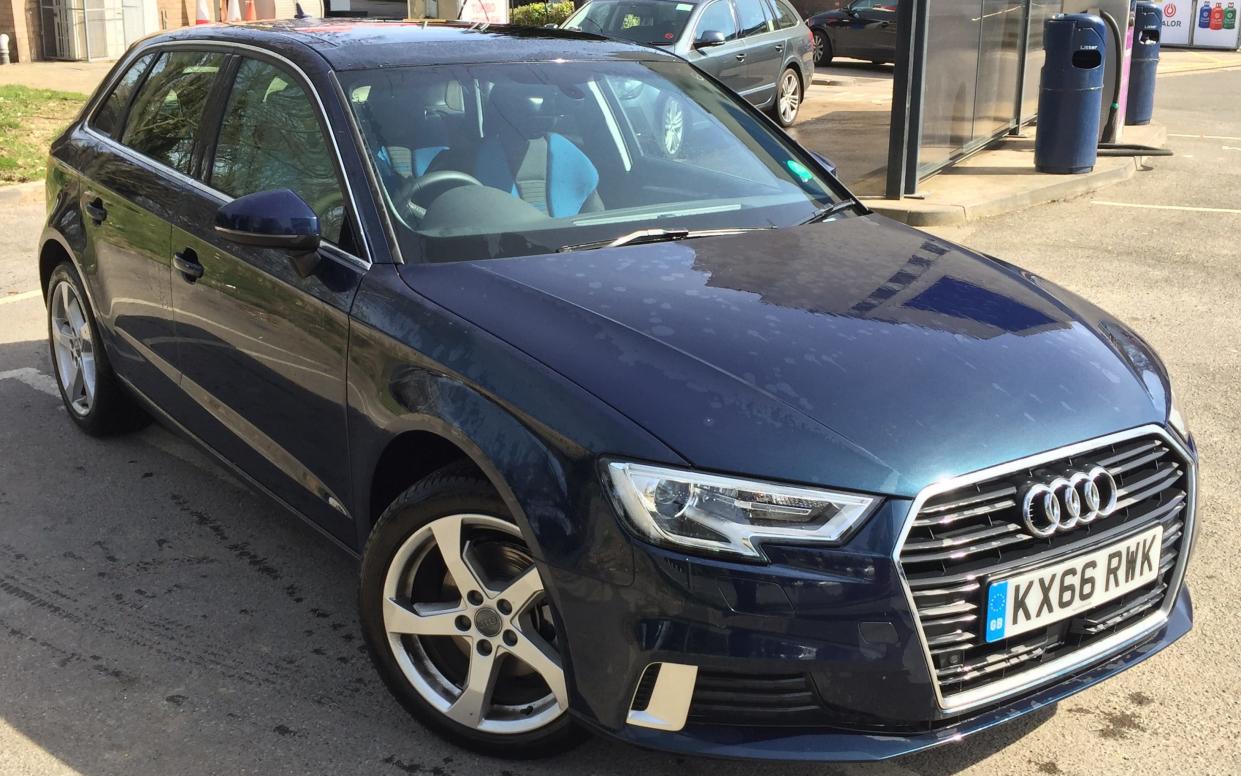
The Audi A3 is one of the most popular mid-size premium cars on sale, but does a mid-life facelift keep it at the top of the class? Chris Knapman tested a saloon version then swapped it for a hatchback to find out which is the most family-friendly
Our car: 1.0 TFSI Sportback 116PS Sport List price when new: £21,535 Price as tested: £27,630 Official fuel economy: 62.8mpg (EU Combined)
May 16th, 2017
Fuel economy this week: 45mpg
It was all the way back in September when our Audi A3 long-term test car arrived, although it was actually a different A3 to the one you see here. That's because while the intention had always been to see if the 1.0-litre Sportback would be the ideal family car, Audi didn't actually have one available to start with. However, its solution, which was to lend us a 1.4-litre petrol saloon in the interim, was actually rather inspired.
For a start, it reinforced just how good that 1.4-litre turbocharged petrol engine is, with plenty of poke and, thanks to its cylinder on demand technology (this closes down two of the four cylinders when not needed), decent fuel economy, too. Combined with Audi's S-tronic dual-clutch automatic gearbox it resulted in a beautifully refined car, harmed only by the amount of road noise generated by its 19-inch tyres.
The saloon boot configuration wasn't as restrictive as I'd expected either. In fact, it offered more space than the hatchback, although slotting our heavy baby buggy through the saloon's smaller boot opening wasn't as easy as lifting in into the Sportback's hatch, particularly with the variable load floor of the latter set in its higher position.
For the Sportback I opted for Sport spec rather than S-Line, and stuck with the standard 17-inch wheels. Of the extras I added, the Virtual Cockpit digital dash display, heated seats and sunroof have been used most extensively, all lending a sense of luxury to the A3.
I'd also set out to discover if the 1.0-litre turbocharged petrol engine would provide enough performance to transport a family of four. The answer is a firm yes, and the fact it has averaged 45.5mpg over the past six months is not to be sniffed at. It hasn't required a drop of oil either - in fact, I haven't experienced a single problem with the A3 other than a rattling dash that fixed itself after a couple of hundred miles.
Personally, as a bit of a petrolhead my ideal A3 would still include the extra power of the 1.4 - I've actually found myself checking out other A3s to see if they have the combination of a TFSI badge on the boot and twin exhausts that signifies my ideal spec - but it's a close-run thing.
However, the bottom line is that when I took delivery of this car I was certain that there was no small family hatchback that could match the A3 Sportback's blend of ride comfort, handling and interior quality. Six months later, and despite revised versions of the Volkswagen Golf, Skoda Octavia and Seat Leon all making appearances, the Audi remains the clear class leader.
Oh, and for those of you who read last week's long-term update, the A3's replacement has been running just fine. In fact, it's already earned my respect with a solidity of build that you just would not expect in a 13-year old supermini, providing further proof that Audi's attention to detail ensures that its interiors not only look great, but also that they will stand the test of time.
Here's hoping that the oily parts of my little A2 prove to be similarly robust...
May 10th, 2017
Fuel economy this week: 47.1mpg
My time with the A3 is fast approaching its conclusion. Apart from anything else this left something of a dilemma as to what will replace it. The trouble with running a car like the A3 is that it sets your expectations very high.
I had the same problem when I previously ran a Ford Fiesta on long-term test (not to mention the Renaultsport Clio 200 Cup during a previous job). It's all very well to run the best model in its class on an extended basis, but if at the end of the test it clearly remains the best model in its class - and in all three cases it has - then it's almost certain one will end up moving into something less polished.
It is partly this train of thought that has led me to replace this Audi with another Audi, only this time it's 13 years old. Specifically I've found a rather lovely A2, a car I've always found fascinating. Of course it's not going to be up to A3 standards in any of the major areas (particularly ride comfort!), but with its aluminium build and surprisingly spacious interior it is at least interesting.
I'll be doing a full farewell report for our A3 next week. In the meantime I'm about to catch a train to collect my "new" old Audi. Wish me luck.
May 2nd, 2017
Fuel economy this week:48.1mpg
My tour of the latest VW Group mid-size family hatchbacks drew to a close last week with a test of the new Seat Leon.
Seat's A3/Golf/Octavia rival has been in a hit in the UK, primarily thanks to the fact it was cheaper to buy than a the VW and Audi without losing out much in terms of quality or specification. For 2017 it's also now available with the same 1.0-litre, three-cylinder petrol engine as the Golf, Octavia and our long-term test A3, as well as a revised infotainment system.
The good news is that in terms of performance the 1.0-litre engine shines almost as brightly in the Leon as it does in he A3, with a good turn of speed and the potential to top 50mpg on a long run. However, the installation is not as polished, with more engine noise apparent in the Seat than in our Audi. Throw in a firmer ride than the Audi (even when on 16-inch wheels to our A3's 17-inch rims), plus a bit more tyre and wind noise, and the Seat simply isn't as pleasant to drive.
What's more the Spanish brand's take on VW's latest infotainment touchscreen system is really disappointing, primarily because it is virtually impossible to zoom in or out of the satnav map without inadvertently hitting a another command in the process.
So there you have it, the VW Group has indeed managed to build four cars broadly based on the same parts and yet still create enough differences for there to be a clear running order. For me that starts with the A3 at the top, followed by the Golf, then the Octavia and in last place the Leon.
April 25th, 2017
Fuel economy this week: 49.2mpg
After comparing the A3 with the freshly facelifted Volkswagen Golf a couple of weeks ago, it's time for another VW Group stablemate to face up to the Audi. This time it's the Skoda Octavia, which again has been the subject of a recent series of revisions, most notably some new headlights, improved safety kit and a new infotainment system.
If you hoped this might make it an A3 on the cheap, I'm afraid you'll be disappointed. That role, after all, is occupied by the Golf, with Skoda's aim more to feel like a cut-price VW, thus placing it two rungs down the ladder from Audi's level of fit and finish.
Don't get me wrong, the Octavia is a perfectly pleasant car, and in a couple of areas leaves the Audi in the shade, most notably in how much space it offers.
However, as a car to travel in, the A3 Sportback is that much more enjoyable, with a better ride quality, superior infotainment and lower noise levels. In addition there's a slickness to the Audi's controls that is almost BMW-like in its quality, with a consistent weighting across the pedals, gear change and steering that makes the car a delight to drive, whether you're in town, on the motorway or on a country road.
Of course, the Skoda is cheaper by thousands of pounds when fitted with the same 1.0-litre engine, and against most other rivals is a standout car, but in this instance it really does feel as though you get what you pay for.
Conveniently enough later this week I'll be driving the Seat Leon (another product of the VW Group which, you'll be surprised to hear, has just been given a midlife facelift). I'll report back next week to see where it ranks in the A3/Golf/Octavia family feud.
April 11th, 2017
Fuel economy this week: 46.1mpg
In theory the A3's biggest rivals are the BMW 1-series and Mercedes A-class, but I'd wager that a greater number of people struggle to choose between the Audi and its VW Group stablemate, the Volkswagen Golf.
The latter, now in its seventh generation, has just been given a mid-life facelift, which presents something of a problem for our particular Audi. You see, until now, the only way you could have a Golf with the turbocharged 1.0-litre petrol engine was to opt for the eco-tuned Bluemotion model, which occupied a rank in the Golf range that was considerably north of entry-level. Audi, meanwhile, made the 1.0-litre triple its base version, which actually made it cheaper to buy than the equivalent Golf.
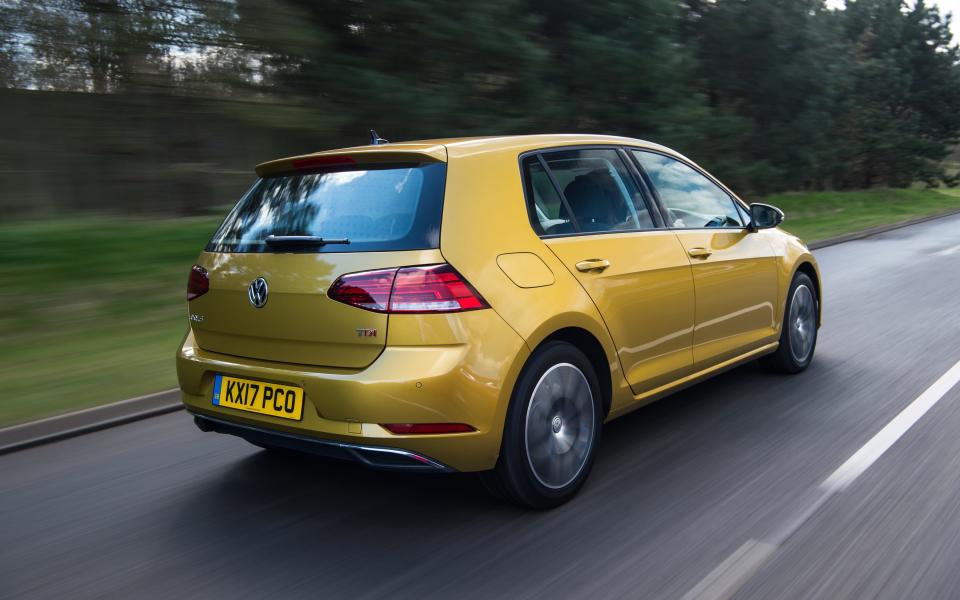
The refreshed Golf line-up changes this by ditching the old 1.2-litre base model and replacing it with the 1.0-litre, with either 84bhp or 108bhp (Audi, oddly, finds 113bhp from the same engine). So now a five-door Golf in SE spec with the higher-output version of the 1.0-litre engine costs £19,370, whereas to have it in an SE-spec A3 Sportback is £20,585.
The question, then, is what does the Audi give you for the extra £1,215? For a start there's the prestige of having the four rings on the grille, and the A3's dashboard has the edge in terms of tactility and its superior infotainment system. The Audi also handles marginally better, but whether all that adds up to £1,215 - before discounts, of course - is a fine line, particularly considering they are both so good in all the other important areas (ride, space, residual values and so on).
The bottom line is that there's no real loser in this comparison, but for me the Audi's superior handling and more intuitive interface just about tip the balance in its favour.
March 28th, 2017
Fuel economy this week: 44.3mpg
I mentioned last week about the A3's sunroof not being all that panoramic, so here's a picture to prove it. As you can see, while the glass section of the roof is indeed huge, the aperture it leaves when open is much more like that of an ordinary sunroof.
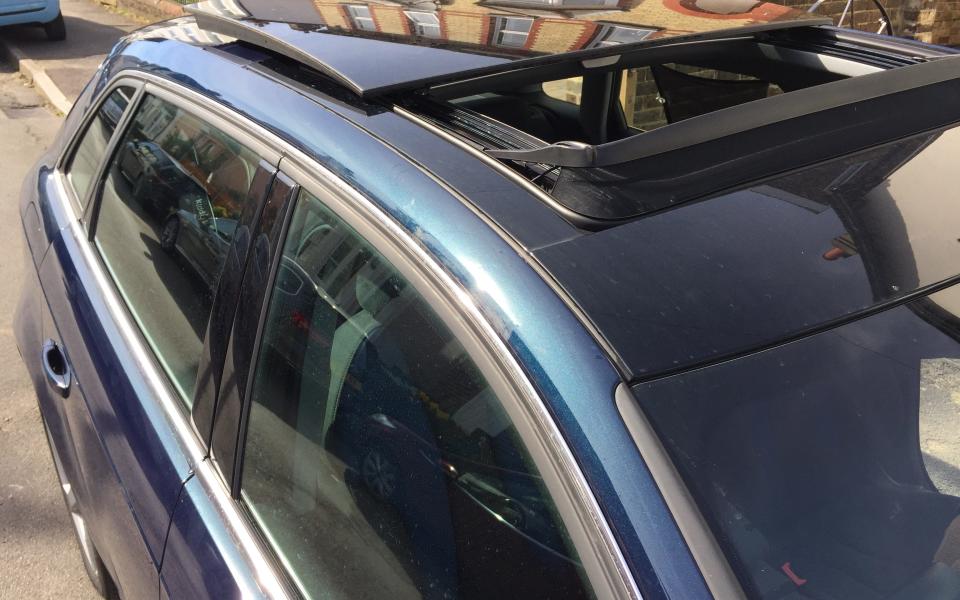
This weekend I also treated the A3 to what was possibly the most lacklustre clean ever witnessed on account of my three-year-old son "helping". The result from a distance is respectable enough, but look up close and the patches of dirt remain all too evident.
That'll be a job for next week, then.
March 22nd, 2017
Fuel economy this week: 48.1mpg
No success finding the missing Isofix plastic clip from my son's car seat, although that is primarily because I haven't had time to look for it. While doing so I think I'll also treat the car to a full valet to address the winter's worth of road grime adhered to its Cosmos blue metallic paint.
This has actually been a more interesting colour choice than I'd originally expected, looking surprisingly bright in direct sunlight. The downside is that on a gloomy day, and covered in grime, it's less inspiring.
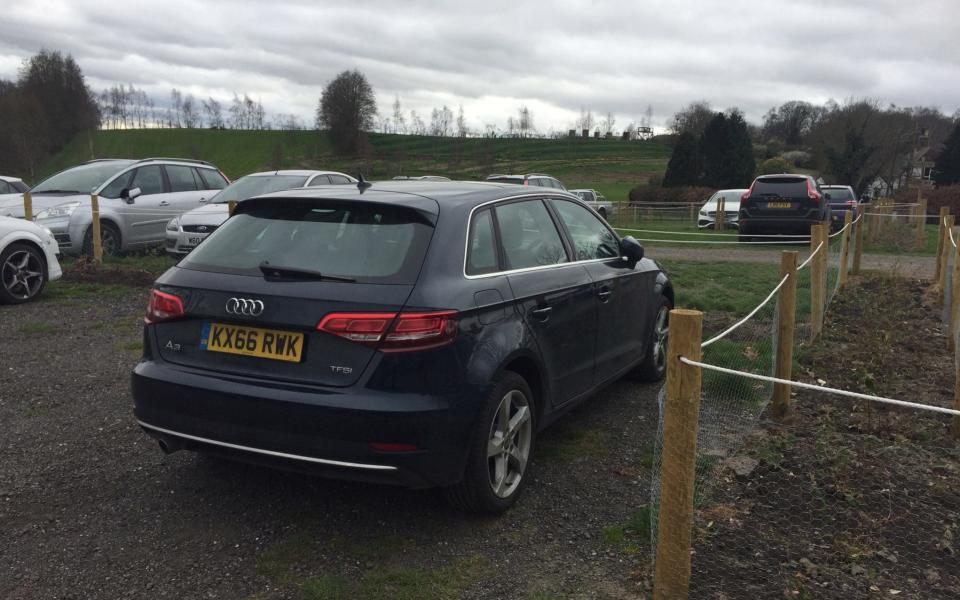
The recent warmer weather has also given me a chance to enjoy the car's panoramic sunroof, one of the pricier options added at £1,075. That sum is pretty typical for a panoramic roof (an item, incidentally, manufacturers apparently make a healthy profit margin on), but in the A3 it does feel a touch steep.
That's because the sunroof isn't really panoramic at all, because it doesn't extend the full length of the car as you might reasonably expect. Instead it stops just above the front headrests, which seems like a distinctly normal-sized sunroof to me.
It is at least a proper tilt and slide system, and thus allows a nice stream of fresh air to enter the interior without being too noisy.
March 14th, 2017
Fuel economy this week: 39.7mpg
Lots of short runs for this A3 this week, which has resulted in an inevitable drop in fuel economy. You need five or so miles on the clock before the short-term trip computer will click over 40mpg, which also highlights how useful it is to have both short- and long-term displays for average economy (the former resets itself ahead of every journey).
At least with the Sportback's petrol engine I don't need to worry about diesel particulate filters (DPFs) potentially clogging up with this kind of use though.
Of more concern is the fact my son's car seat has shed one of the plastic clips for its Isofix mounts. As a result removing the seat is somewhat tricky, although it thankfully still clips in without a problem. I'm assuming/hoping the missing clip is somewhere in the A3, but a quick search in the dark last night didn't yield any success. I fear it might have slipped inside the plastic housing that Audi uses for the Isofix bars, which is going to mean removing the boot carpet to try and access it.

Speaking of that plastic housing, it's one of two family-friendly features I really like about Audis. Find a car where the Isofix bars are stuffed behind a load of seat material (Jaguars are a good example) and it can be a real pain trying to fix in an Isofix seat. In the Audi you simply remove the plastic covers and clip in.
The other neat touch is that the child locks for the rear doors can be individually engaged via a switch on the driver's door, which is not only helpful on those occasions when one has forgotten to do it before setting off, but also makes it easy to address those OCD "did I, didn't I?" moments that I'm sure all parents suffer from every now and then.
March 6th, 2017
Fuel economy this week: 43.2mpg
Just spent an interesting week in Toyota's C-HR, which is the kind of small SUV that is taking sales from traditional family cars such as the A3 Sportback. More often that not I struggle to see why this is the case, what with family cars generally offering a similar amount of space for a lower cost.
However, I was more convinced by the C-HR than most. For a start, it looks fantastic, providing the same kind of aesthetic shock as the Range Rover Evoque did when it came out. The fact it comes from the same company that builds such worthy machines as the Auris and Avensis only serves to reinforce how dramatic its styling is.
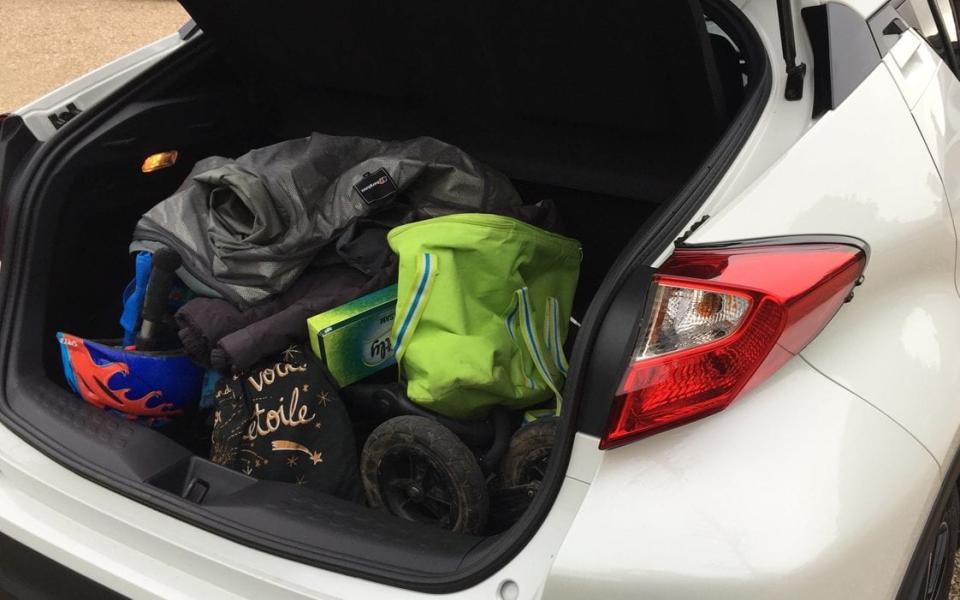
It's also usefully spacious inside, with enough room in the back to fit a rear-facing child seat on its Isofix base without forcing the passenger in front to have their knees rammed into the glovebox. The boot is a match for the A3 Sportback's, too, which is to say big enough for the detritus associated with a family of four.
Where the C-HR might really gain traction, however, is that it combines the above positives with a petrol-electric hybrid drivetrain, which in turn means more than 55mpg is easily achievable. What's more, unless you accelerate hard (at which point the CVT gearbox sends the revs soaring), it is a quiet and smooth car to drive, with responsive handling for an SUV. Watch the ride on the 18-inch wheels though, which is overly firm at times.
It's not exactly surprising that the A3 has the superior dashboard design, because Audi does tend to lead the field in this area. But I was also amazed with just how plush the C-HR is inside, with contrasting dash panels, a good touchscreen system and very decent material selection. It's one of many reasons I think it is up there with not only the best Toyotas on sale, but also the best small SUVs.
Whether that makes it better than a traditional family hatchback, however, I remain to be convinced.
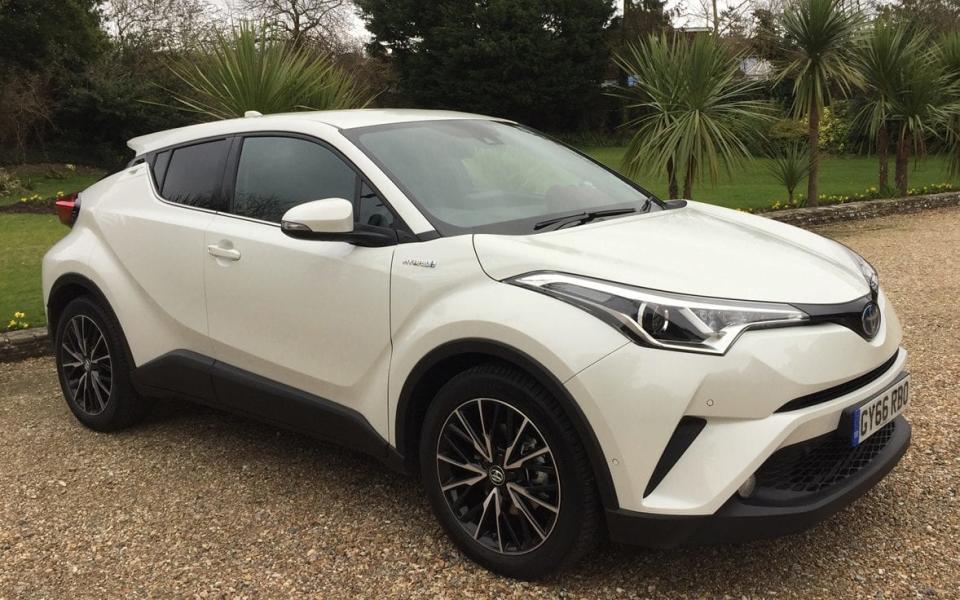
March 1st, 2017
Fuel economy this week: 45.2mpg
Regular readers of this blog will know that I arrived at the A3 Sportback after three months in an equivalent saloon to see how the two would compare. While there are obvious merits to each, I've been finding that choosing my preferred option is harder than expected.
Certainly as family transport I prefer the boot access of the hatchback, which makes it easier to lift our baby buggy in and out, as well as to fill every nook and cranny for long trips away.
However, I still can't help but do an envious double take every time I see an A3 Saloon on the road, which I've come to realise is probably a touch of jealousy. There's just something about the way that car blends space for four with sleek styling that sits very well with a family man in his mid-30s.

I also really rated the combination of the 1.4-litre cylinder-on-demand petrol engine with the seven-speed S tronic dual-clutch gearbox in our test car, which offered the perfect blend of power, smoothness and refinement. True, the 19-inch wheels were a bit much, primarily because of the extra tyre roar they generated (the optional Magnetic Ride adaptive suspension helped the ride comfort to remain respectable), but otherwise this was a really terrific car.
In defence of our Sportback, it still has the better ride of the two (that's one of the advantages of having 17-inch wheels), it's more economical, and it delivers sufficient performance. The six-speed manual gearbox is also good to use.
The Sportback is also cheaper than the saloon to the tune of about £560 on a like-for-like basis, although because the latter is not available with the entry-level 1.0-litre petrol engine the gap between them looks much larger on paper.
What we have here, then, is a classic case of head versus heart. Do you take the car that's cheaper to buy and run, more comfortable to drive and easier to load? Or do you take the one that's faster and looks better? Right now the latter probably just edges it for me... until I change my mind again.
February 21st, 2017
Fuel economy this week: 46.8mpg
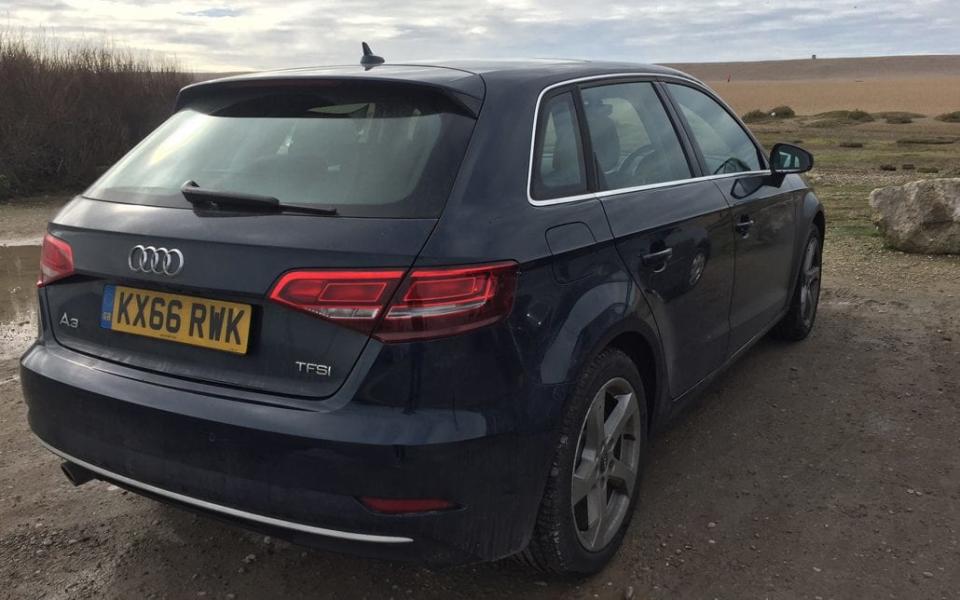
We loaded the A3 Sportback for half-term last week and headed to the coast. Two adults, two kids, a buggy, travel cot, backpack carrier et al were squeezed into the car, proving once again that it can act as sole family transport.
More impressive is that only occasionally did the 1.0-litre engine feel like it was out of its depth, primarily when accelerating in sixth gear up long hills. It was fine once the turbo was helping out, but in the initial phase of acceleration the amount of weight on board certainly had an impact on how the engine picked up.
Still, we managed 430 miles before the refuelling light pinged into life, which by my reckoning is good going from a petrol engine. The trip computer put our average at 46.8mpg, which again seems perfectly fair.
I also liked that the live traffic information allows you to route around the worst jams, which when you're on a long journey with two small children in the car really does make all the difference.
The slight rattle from the dash appears to have fixed itself, too, which is a bonus. Combined with the quiet ride, it results in a great car for tackling long journeys.
February 14th, 2017
Fuel economy this week: 49.1mpg
Interesting to see reports that Herbert Diess, VW's chairman, is predicting the end of engine downsizing for diesels. "Emissions tend to go up as engines get smaller," was the thrust of Diess's argument, which referred not to a car's performance in the current New European Driving Cycle (NEDC) fuel economy tests, but in the more realistic real world Driving Emissions Test (RDE) element of the Worldwide Harmonised Light-duty Vehicles Testing Procedure (WLTP) set to be introduced in 2019.
A similar argument could be levelled at some of the downsized petrol engines currently on sale, which fail to deliver the kind of economy you'd expect. In my experience, however, Volkswagen's 1.0-litre petrol unit is better than most.
I've tried this engine in several cars, including the Polo, Golf, Seat Ateca, Audi A1 and of course our A3 Sportback, and have always been impressed with how economical it's been in normal driving. That's especially so considering the performance on offer - compared with an Audi A3 1.6 TDI, for example, the 1.0-litre petrol is faster when accelerating from 0-62mph (9.9sec for the petrol versus 10.7sec for the diesel), although I admit that in-gear pull isn't quite as strong.
I could easily live with that, however, for two things. First, as previously reported our A3 will easily average 50mpg on a longer run, which means it's really not far off what a diesel would achieve. Second, it's £2,250 cheaper to buy than the cheapest A3 diesel in the same spec.
So while diesel downsizing at VW might well be coming to an end, I for one hope that this impressive little three-cylinder petrol engine hangs around for a few more years to come.
February 7th, 2017
Fuel economy this week: 47.3mpg
When you arrive at your destination and the kids are fast asleep in the back of the car, it is always worth taking a moment to appreciate the peace and quiet. My wife wasn't overly pleased, therefore, with my ceaseless clicking of the Audi's infotainment controls as I scrolled through the system in search of new features.
Not least, I wanted the opportunity to give the Audi Connect online services a try. To be honest, I had added this to the car's specification largely to get Google Earth and Street View, which look amazing on the Virtual Cockpit display.

However, there are also some other useful functions. For example, the car can read your emails out or have emails dictated to it, you can log in to Twitter, and you can research events before asking the satnav to direct you to them.
Because the car is connected, it can also download updates, which is what it's asking to do now for the mapping software. With the cost all covered as part of the option, I had just decided it would make sense to do so. Which, of course, is precisely when the kids woke up.
January 24th, 2017
Fuel economy this week: 48mpg
The A3 has been here there and everywhere this week, and not only with me behind the wheel. My wife also borrowed it for a return trip to Oxford, and was impressed with how easy it was to sync her phone to the car's Bluetooth.
I did suggest she used the built-in CarPlay but she forgot her lead and neither of us have worked out how to do it wirelessly yet, even though the car says you can. Answers on a postcard if anybody has figured it out yet.
Other than that we've both enjoyed the car's motorway manners, where it is quiet, stable and has high levels of comfort, both in the suspension and in the seats. Lots of adjustment in the seat and steering wheel also means that both of us can find the ideal driving position.
All it's really missing is a gadget that clears up all the old parking tickets, coffee cups and sweet wrappers left by the previous driver.
January 17th, 2017
Fuel economy this week: 38.1mpg
The death of the in-car CD player has been swift and quiet. One minute they were there, the next they were gone.
The assumption, of course, is that everybody plays their music through their smartphones these days, and so what people really want is an advanced Bluetooth connection or Apple Carplay/Android Auto. That's all well and good, until somebody gives your three-year-old the Julia Donaldson audio book collection on CD for Christmas and you can't immediately play it in the car.
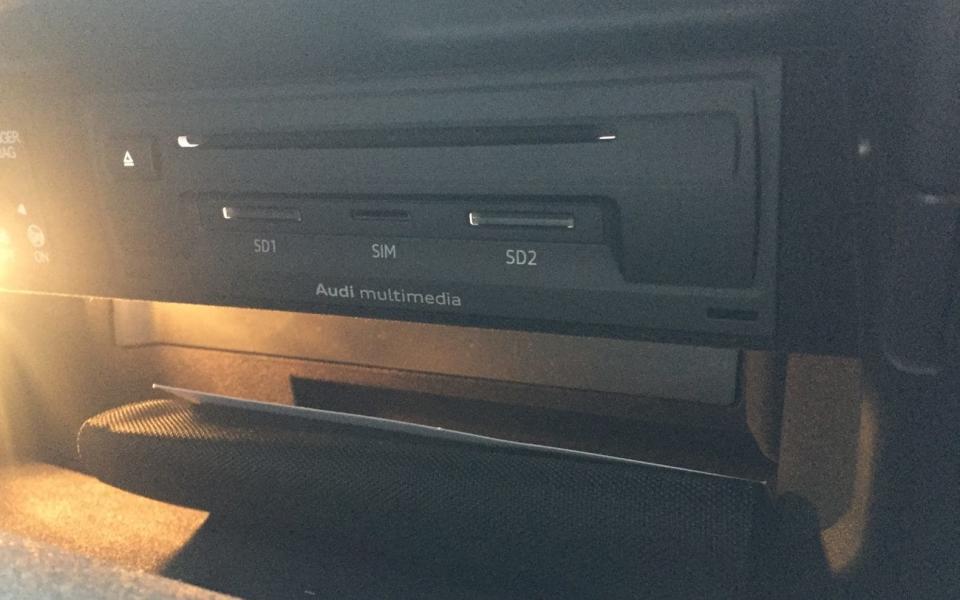
Surveying the A3's minimalist dashboard I feared that this may indeed be the case, but then I pulled open the glovebox and found, to our complete joy, that the Audi A3 is one of the few cars to still be offered with a built-in CD player across the range.
And so, as the mouse took a stroll through the deep dark wood, we were able to drive away, free from tantrums. Phew.
January 12th, 2017
Fuel economy this week: 43.1mpg
When somebody offers you the long-term loan of a press car and invites you to decide on the specification for yourself, the very obvious temptation is to add every conceivable bell and whistle.
However, not only is this not representative of how most people spec a car, but it also means you can end up with a model that is inferior to one that has a more modest selection of options (over specifying on wheel size and sports suspension being prime examples of this).
When it came to choosing what I believe to be the ideal A3, I went for Sport spec with the standard 17-inch wheels in order to get a good ride and handling balance. I then added the Technology Pack Advanced (£1,395, mainly to get the brilliant Virtual Cockpit, but also includes the MMI touchpad, live traffic updates and a mobile phone signal booster), panoramic glass sunroof (£1,075 but I do love a sunroof), heated seats (£300), and “Advanced Key” keyless entry and go (£400 and very useful when you’ve got your arms full with kids and shopping).
The power folding door mirrors (£200) and rear-view camera (£375) are desirable when you need to park on the road, and I added adaptive cruise control with pre-sense automatic emergency braking, because I think the latter element is a fantastic innovation in car safety.
All that, along with an LED interior lighting pack that I don’t remember ordering (perhaps somebody at Audi sneaked it on to maximise the interior ambience?) takes the total price of “my” A3 to £27,630 on the road.
So it’s not a cheap car, but given how good it is and how polished it feels, I think that figure represents solid value for money.
January 4th, 2017
Fuel economy this week: 46.3mpg
A month into life with our A3 hatchback, and I'm so impressed with the ride quality on the 17-inch wheels. These are standard fitment on the mid-range Sport model that I think is the pick of the range, and with the 225/45 tyres give a ride that is not only the best of any mid-size hatchback that I can think of, but also puts many larger cars to shame.
What's more, it doesn't achieve this by being overly soft, which can be just as uncomfortable as suspension that is overly firm. Rather the A3 strikes just the right balance between compliance and control, rounding the edges off bumps and speed humps, rather than trying to hide the fact they exist.
No doubt having the VW Group's 1.0-litre, three-cylinder petrol engine over the front wheels helps with all this, because by virtue of being small it is also light, giving the suspension less work to do.
Contributing to the A3's sense of calm is the fact it is so quiet. Again, opting for one of the smaller wheel and tyre sizes helps here (this 1.0-litre hatchback is significantly quieter than our previous A3 Saloon with 19-inch rims), as does choosing a petrol engine rather than a diesel.
It's one of several aspects of the A3 that make it feel like a truly premium product.
December 28th, 2016
Fuel economy this week: 48.3mpg

Lovely Boxing Day walk with the family, and the A3 acting as transport. As such it's starting to look a bit grubby (particularly the boot, where muddy buggy wheels are making a mess of the carpet), so it will be treated to a new year clean.
The reversing camera has been a real bonus with this car, and while the screen is smaller than you get in some cars (the Tesla Model S springs to mind) the image quality is excellent.
In fact it puts a recent Land Rover test car's reversing camera to shame, despite the Audi costing about half the price.
December 13th, 2016
Fuel economy this week: 43.2mpg
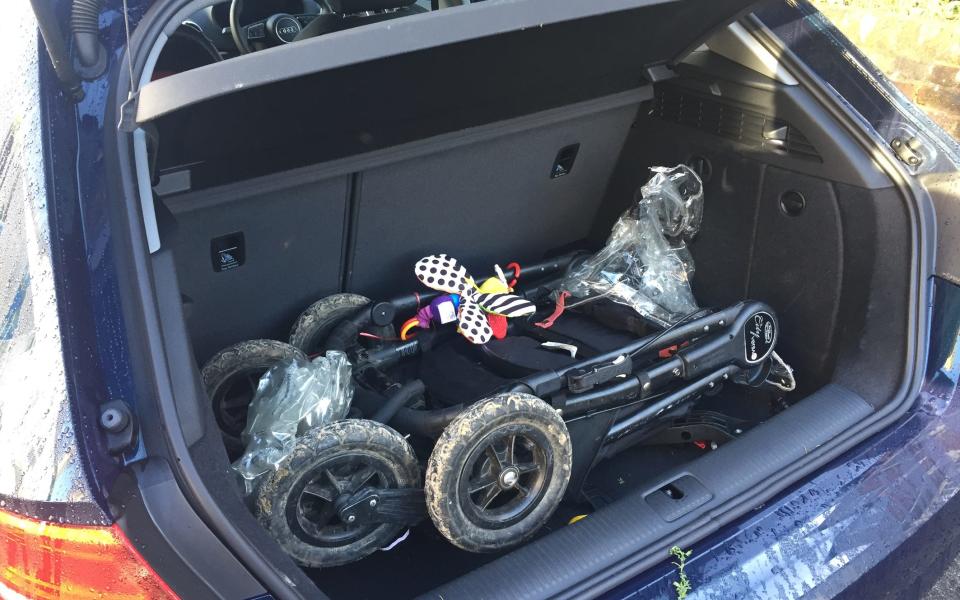
The theory goes that hatchbacks are generally more practical than saloons, with the larger tailgate providing easier access to the luggage area. However, at 425 litres of overall boot space for the saloon version versus 380 for the hatchback, it is the former that is actually the more useful A3, which is something I’ve certainly noticed since swapping cars.
For a start, if you want to carry as much stuff in the Sportback as in the A3 Saloon, you'd need to load it right up to the roof, which I really don’t like doing, particularly when kids are in the car.
But also the saloon scores (for parents at least) because you can slide the baby buggy in lengthways, rather than across the width of the car. This not only leaves half of the boot free for other items, but also means you can take the buggy out without having to unload everything else first.
That is not to say the A3 Sportback’s boot is without merit. It matches the Volkswagen Golf for overall volume, and doesn’t suffer from the silly narrow opening of the Mercedes A-class. There’s also an adjustable boot floor, which you can either drop to its lowest setting for maximum space, or raise to create an almost flat load bay, which is useful if you need to lift in heavy items.
Underneath that boot floor, meanwhile, resides a spacesaver spare wheel (I still don’t trust those temporary repair kits...), soon to be joined by sweet wrappers, raisins and pieces of Lego.
December 7th, 2016
Fuel economy this week: 44.5mpg
Any doubts about whether a 1.0-litre engine was enough to pull along a fully loaded A3 Sportback have been quickly washed away with our new long-term test car.
I'd rate this as the best 1.0-litre engine currently on sale for its combination of pulling power and parsimony. Even before it's properly run in it keeps up with traffic with ease and has been returning up to 48mpg on longer motorway runs. When asked what size engine she thought the Audi had, Mrs K replied, "I don't know, it feels quite powerful. Two litres?"
"Ha," I said, savouring the moment. "It's actually just a little one-litre with only three cylinders and a small turbocharger to give it the kind of performance you'd usually expect from a bigger engine but with the economy of a smaller unit."
She didn't reply, either because she was speechless at the thought of such technology, or she'd just stopped listening, but either way her initial assessment is another demonstration of how these smaller petrol engines could well be here to stay.
Less impressive is a creak from the A3's dash down by the driver's knee, which is detracting from the otherwise high quality feel. I'll get it looked at and report back.
November 30th, 2016
Fuel economy this week: 44.1mpg

As per the plan, our A3 Saloon has been replaced by an A3 Sportback to see how the two compare. Frankly, the newcomer has got a big job on its hands, because our saloon really wormed its way into my affections, with the combination of the 1.4-litre turbocharged petrol engine, S-tronic automatic gearbox and sporty S-line styling.
So, what do we want to find out here? First, there’s the obvious: is the Sportback a better option than the saloon in terms of practicality? Obviously there’s an element of different strokes for different folks to that particular question, but, as we’ll come to discover, it’s still relevant.
More important is what’s at the other end of the car, under the bonnet, because our Sportback is powered by a 1.0-litre turbocharged petrol engine, and in place of the Saloon's automatic gearbox is a six-speed manual.
I’ve also swapped the S-line spec of the saloon with its enormous wheels and adaptive suspension (an altogether expensive combination) for a more basic Sport model on standard suspension and 17-inch wheels, and added what I’d consider to be the ideal spec, more of which next week.
For now, it’s time to get some miles on the clock.
November 8th, 2016
Had a nice long run in the A3 last week. It took the best part of three hours to get out of London, followed by another hour or so on dual carriageways and country roads, and aside from too much road noise from those big wheels and tyres, the A3 was hard to fault.
In town the S-tronic gearbox and the car's small dimensions make it as relaxing as sitting in traffic could be, helped by the Bang and Olufsen stereo upgrade (£750) and access to my music collection via Apple Carplay. The satnav of course failed dismally to calculate just how long it can take to get across London, probably because nobody programming such a system would believe that it could be as gruelling as it really is. But the live traffic updates did do their best to get me around some of the jams.
In the end it took just over four hours to cover 105.6 miles, which is rubbish, but the 43.1mpg recorded by the trip computer shows how economical this 1.4-litre turbo petrol engine can be, in part because it runs on just two of its four cylinders when conditions allow (you really can't feel the switch).
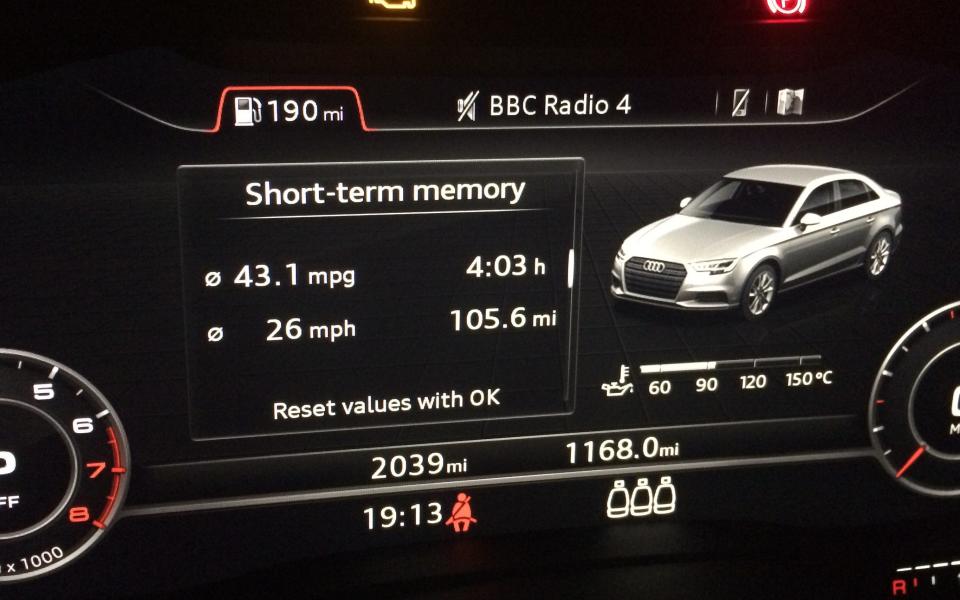
The last 10 or so miles of the journey were also on quite good roads, giving me a chance to try out Dynamic mode on the Drive Select system. This holds on to gears for longer, sharpens the throttle (albeit not by much), stiffens the optional £995 adaptive suspension (by quite a lot) and adds a chunk more weight to the steering. It doesn't turn the A3 into a hot hatch by any stretch, but there's enough performance here and what is actually really good steering, to keep most people entertained. It's part of what makes the A3 such a good all-round proposition.
Easy to drive in town, comfortable on the motorway and fun when the mood takes you. It's really a very good car indeed.
October 18th, 2016
Fuel economy this week: 37.4mpg
Audi is so clever about how it engineers the primary contact points in its cars that they are rarely anything other than a pleasure to use, and that includes the A3.
Take the simple act of switching off and getting out, for example. You squeeze the trigger on the automatic gear-lever and slide it smoothly into park, appreciating the combination of supple leather and cool metal in your left hand, which then drop backs to tweak the handbrake button.
At the same time you twist the chunky key in the ignition through to off, retract it from the barrel and at once press down with your thumb and curl your index finger, causing the key to swivel back into its chunky plastic holder. With key clasped between your bottom two fingers and the palm of your hand, you use your remaining fingers to pull the door handle, and then ease your way out, elbow first.
I'll be the first to admit that this is a verbose way of explaining the steps required to get out of a car, but what's so clever about the A3 is that every element becomes something to savour. Not just because it is so tactile, but because there is a uniform weight to each control which encourages you to turn the process into one fluid movement.
As such, it doesn't matter what other car I happen to have been driving, it is always a pleasure to get back into - or out of - the A3.
Cars Jargon buster | Essential information for car buyers
October 11th, 2016
Fuel economy this week:37.6mpg
I've spent a bit of time this week driving a colleague's new long-term test car, a Skoda Superb. I mention this because it is fitted with the same engine and gearbox combination as our A3, so that's 148bhp (150PS) from 1.4 turbocharged litres, matched to a seven-speed dual-clutch automatic gearbox. Audi calls the latter "S-tronic", whereas Skoda sticks with "DSG".
No surprise that the engine is as smooth and as quiet in the big Skoda as it is in our A3. What really impresses though is that it still feels more than able to cope with what is a much bigger car. According to the quoted kerb weights, the Superb weighs 105kg more than the A3 Saloon when fitted with the same engine, and yet in both cars part-throttle performance feels effortless.
It's only when you take the two cars by the scruff of the neck that the Audi feels like the quicker vehicle, a point which is backed up by a 0-62mph time of 8.2sec for the A3 Saloon versus 9sec for the Superb hatchback. The Audi's sportier nature is also brought out by the fact it has steering wheel paddles where the Skoda does not, and the much tighter handling.
In return the Skoda's ride is much softer, and its interior simply vast. Horse for courses, then, but my respect for this engine only continues to grow.


October 4th, 2016
Fuel economy this week: 36.6mpg
You can fit a fair mount of stuff in the boot of an Audi A3 Saloon. Obviously you lose out on the height of the hatchback, but as I don't like to load things above the level of the parcel shelf anyway (particularly with the kids in the car) I actually find the additional length of the saloon's boot to be more useful.
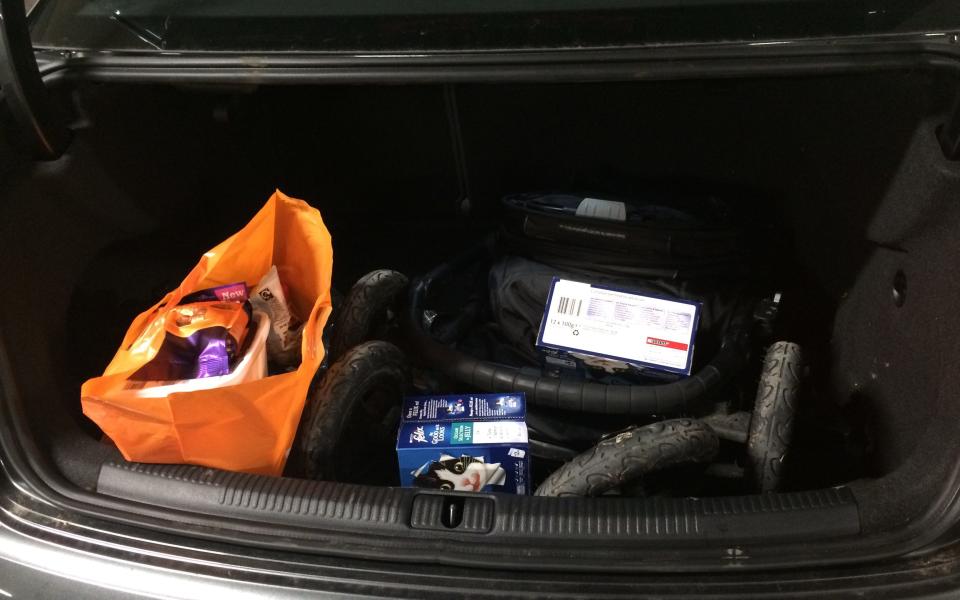
For example, where in the Sportback our baby buggy will only fit in side to side, in the saloon it'll also go front to back, which means you can fill up the other half of the boot without hampering access to the buggy. We've managed to ram it to bursting point on a few occasions, particularly when it comes to the supermarket shop, but I'd still say that this size of car is just about big enough for a family with two young children.
That feeling is reinforced when you note that there's still some leg room for the front passenger even when there's a rear-facing Maxi Cosi behind them on an Isofix base.
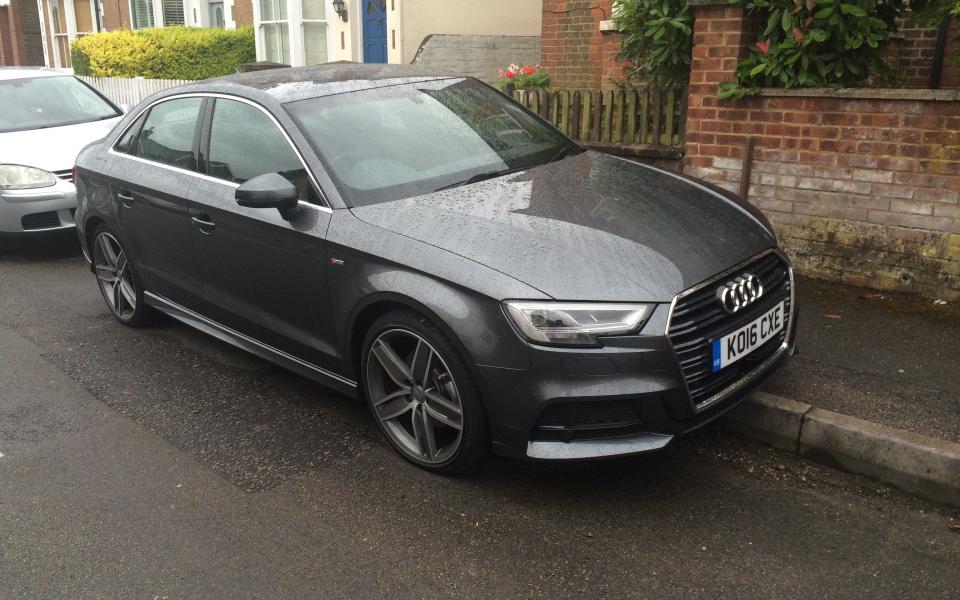
When fully loaded fuel economy drops to the late-30s, whereas our previous long-term test car, a Renault Kadjar diesel, would do more than 55mpg, but the Audi is so much quieter and more responsive (in part due to simply having more power) that I find it more interesting to drive. Don't get me wrong, the Renault was good. But this Audi is brilliant.
September 21st, 2016
Fuel economy this week: 40.4mpg
There are a few elements of the A3's interior that really lift it above the crowd. For a start, the central display screen that glides out of the dash when you switch the ignition on, and slips back in when you turn it off again - that's class right there.
The screen itself is also neat, being slim and with a high resolution, giving it a completely contemporary feel. And so while other car makers might well use screens in their similarly sized models, none feel as advanced as Audi's.
I also like the feel of the switches, which move with such precision and engage with the most satisfying of clicks, so that even adjusting the in-car temperature becomes a moment to savour. Also, it's not just the temperature you can adjust, but even the way in which the air exits the vents (via pushing the centre of the vent in or pulling it out it gives a more direct or dispersed air flow), which are themselves mini wonders of engineering.
Audi's Virtual Cockpit of course shouldn't be ignored, even if it is a fairly costly (from £450 as an optional extra of Sport spec models and above or, as with our car, part of the £1,395 Technology Pack Advanced). Volkswagen and Lamborghini use what is effectively the same system, and Jaguar has developed its own TFT dial display that can also show a map, but none of them are a patch on the Audi's system for looks, features or ease of use.
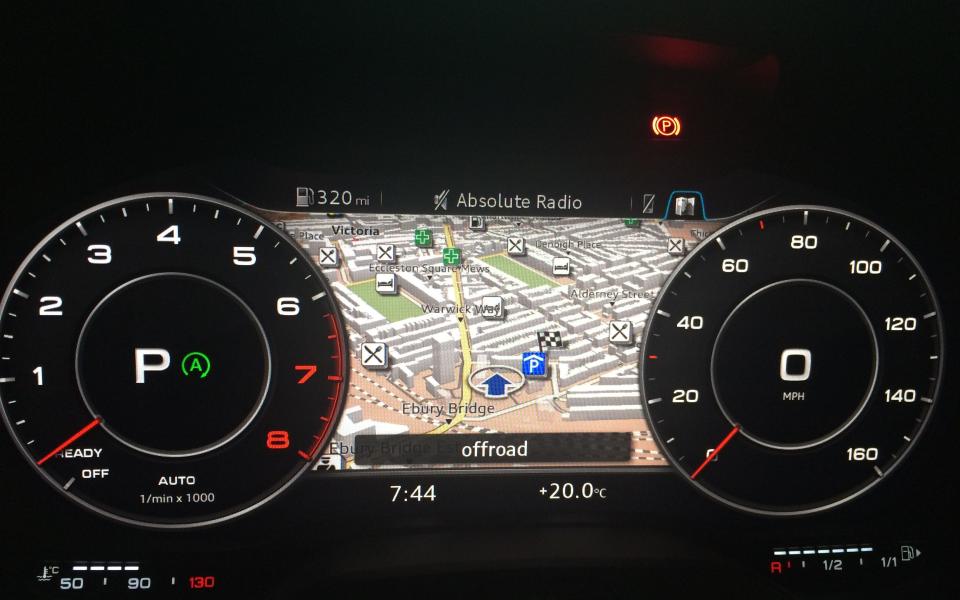

September 13th, 2016
Fuel economy this week:43.5mpg
Colleagues who have driven the A3 have noted that the tyre noise that results from having 19in wheels (to think, 19s on a family car!) is rather intrusive. Use the car on a motorway and for sure the drone is excessive, particularly if the road surface is coarse (junctions 8-9 of the M25, I'm looking at you), but I also think the problem is exaggerated because the rest of the car is just so quiet.
There's so little noise from the 1.4-litre engine, or from wind rustling around the windscreen and wing mirrors, it's as though the A3 is really from the class above, a feeling that is enhanced by the solidity of the interior and the amount of tech that's included.

Our car is also fitted with Audi Magnetic Ride adaptive suspension, without which I can only imagine the ride would be unbearably stiff given the low-profile tyres. As things stand it's actually OK if left in Comfort or Auto modes in the Drive Select system (which also changes steering weight and gearbox shift points), although again I'd rather it used something with a bit less wheel and a bit more tyre (17s would be my ideal).
To summarise, then, if you're going to spend £1,100 upgrading to massive "5-arm wing design alloy wheels in gloss titanium look" wheels, make sure you factor in another £995 for the adaptive suspension. Or, put another way, stick with the standard wheels and save yourself a fortune.
September 6th, 2016
Fuel economy this week: 42.4mpg
Welcome to the newest addition to our long-term test fleet, an Audi A3. Or, more specifically, an Audi A3 Saloon in new, 2016 facelift guise.
In truth the facelift is so mild that it’s hard to notice the external changes, which basically consist of modified headlights, rear lights and bumpers, although in the case of the saloon really not much needed changing. I really do think this is a good looking car, particularly in the S-line trim of our test car with its 19-inch wheels.
Powering our car is the Volkswagen Group’s 1.4-litre turbocharged four-cylinder engine with 148bhp and cylinder-on-demand technology that means it can run on two of its four cylinders in order to save fuel when coasting. This is clever stuff, but what really impresses about this engine is how quiet, smooth and strong it is, particularly when paired with the seven-speed S-tronic automatic gearbox. Coming from a diesel (and a pretty refined one at that, being installed in a Renault Kadjar), the Audi feels so sophisticated that it’s hard not to imagine that petrol won’t start to make a serious comeback.

So far I’ve covered the best part of 500 miles in the A3, so there’s plenty to talk about in the coming weeks, and it’s almost all positive. I love how grown up it feels and the sparky performance when you rev it, I’ve been enjoying surprisingly good fuel economy and am in love with what is surely the best interior of any mid-size car. Audi’s Virtual Cockpit is an absolute delight in day-to-day use.
Not even the optional adaptive suspension can take all of the sting out of those big rims, which also make road noise a problem (normally an A3 strength), but these are spec specific issues and could be easily addressed by choosing smaller wheels.
It’s my job now to run the A3 Saloon and tell you as much about it as possible over the coming weeks before swapping it for a five-door Sportback model with the new 1.0-litre engine and seeing how that compares. It’s going to be an interesting few months.
For all the latest news, advice and reviews from Telegraph Cars, sign up to our weekly newsletter by entering your email here
More long-term tests
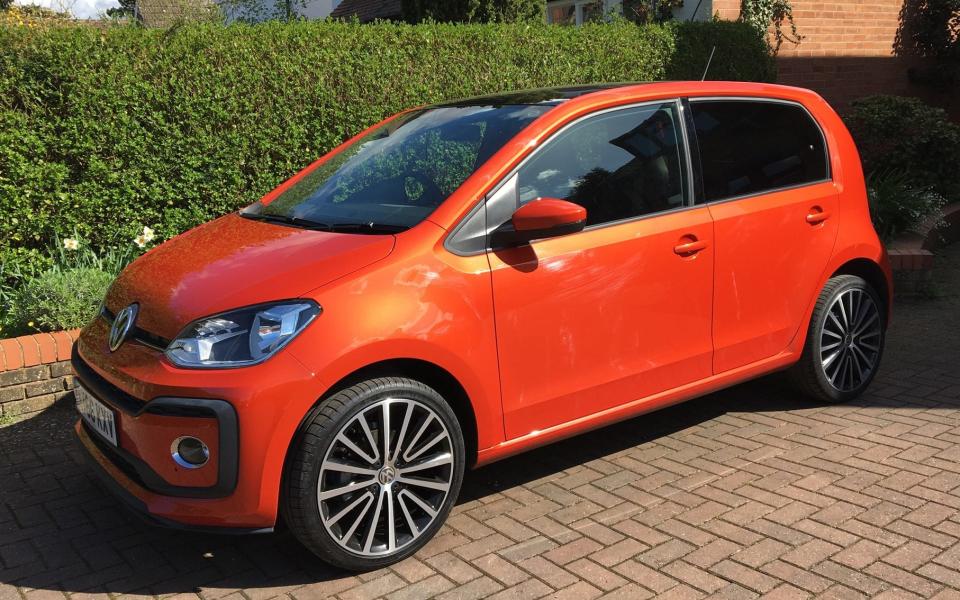
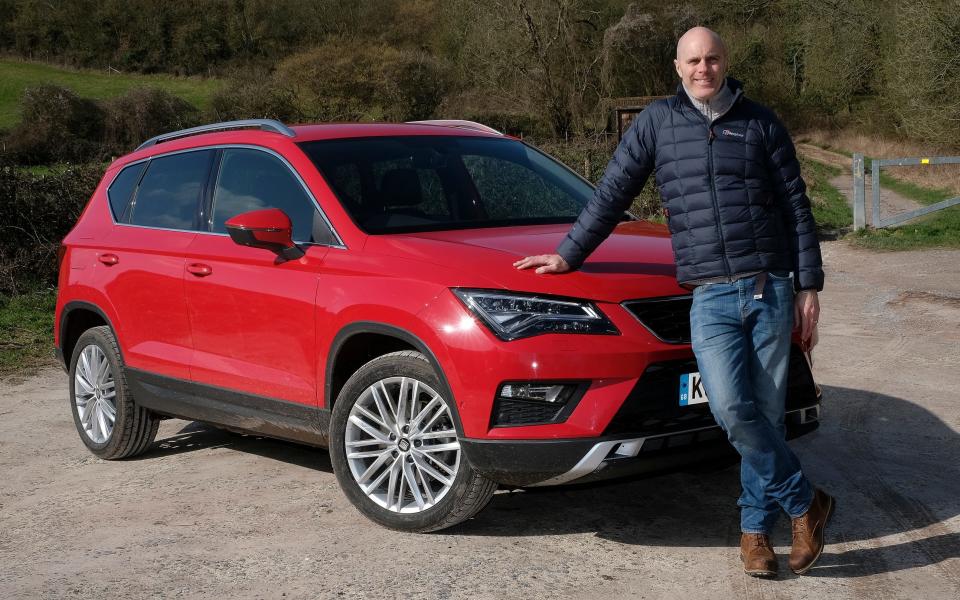
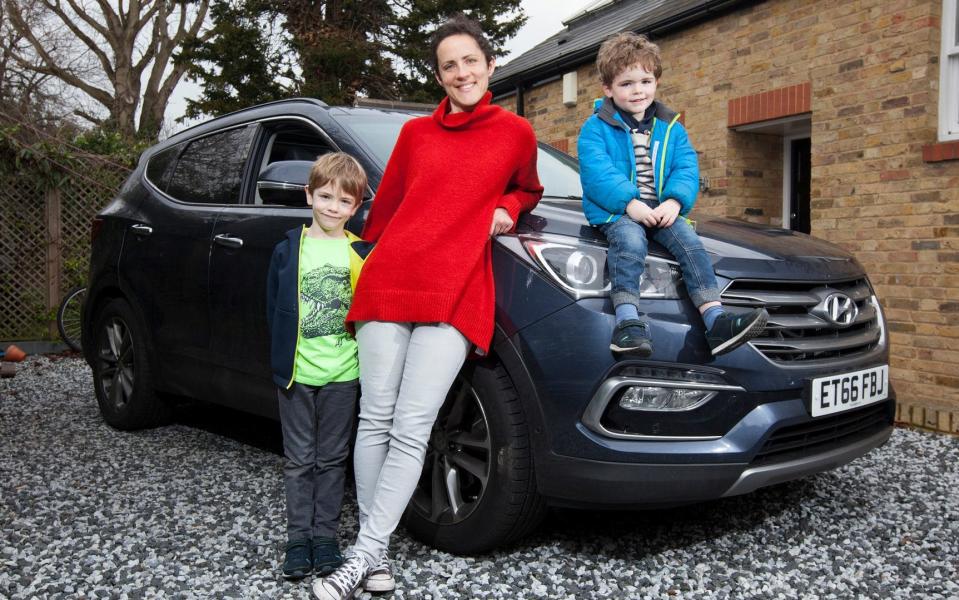


Audi A4 Avant – long-term test

Vauxhall Astra Sports Tourer
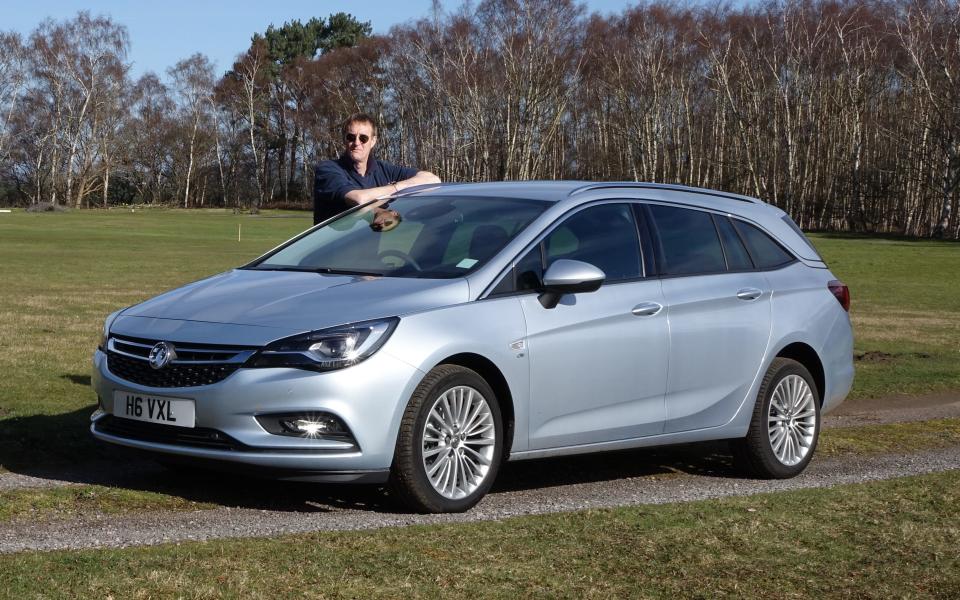
Renault Kadjar – long-term test
Seat Alhambra – long-term test
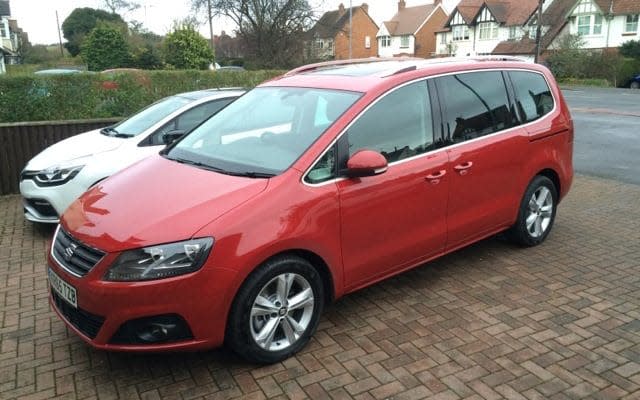

 Yahoo News
Yahoo News 
